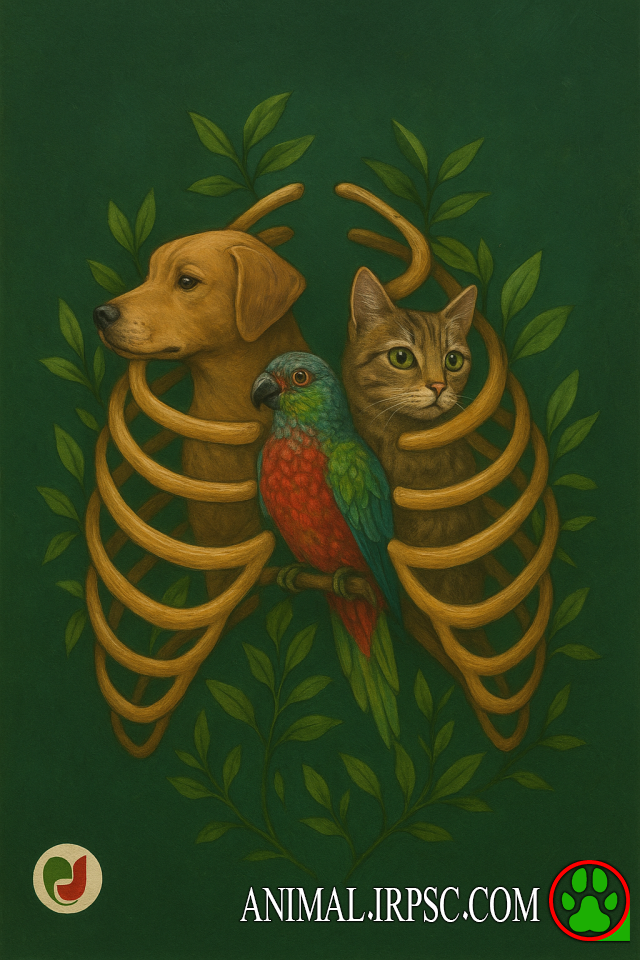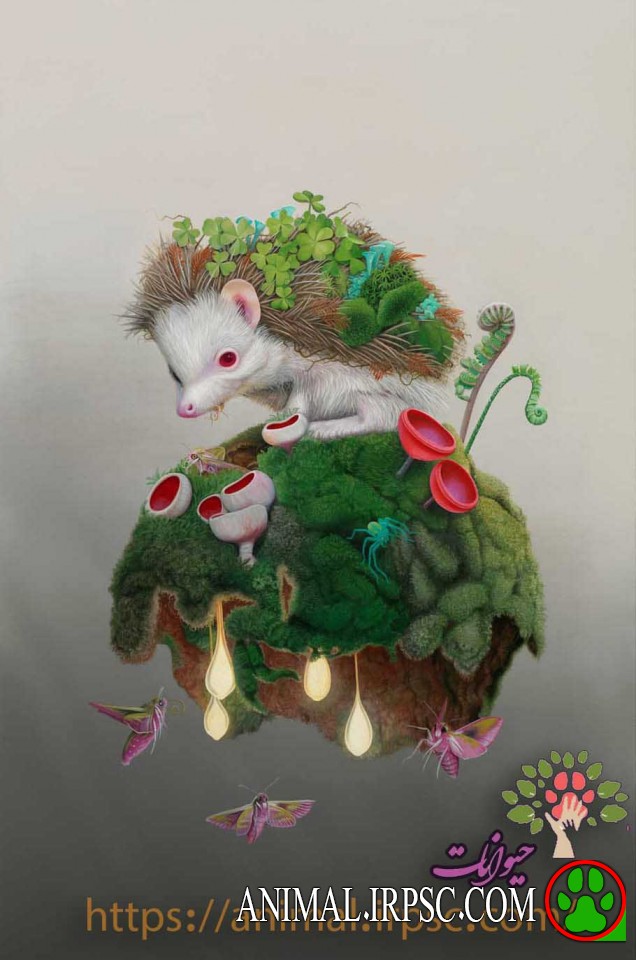“The Disadvantages of Animal Sterilization: A Scientific Review of Hidden Harms to Health, Behavior, and Ecosystems”
Introduction
Controlling the population of stray animals remains one of the most pressing challenges in many cities. The conventional remedy adopted by many municipalities and animal welfare organizations is sterilization — that is, surgical or medical intervention to prevent animals from reproducing. On the surface, it appears to be a humane alternative to culling. However, a growing body of scientific literature reveals that the disadvantages of sterilization are more extensive and complex than commonly appreciated.
This article aims to dissect these risks, highlight underrecognized harms, and argue that indiscriminate large-scale sterilization — especially of street animals — may constitute a form of injustice to the animals themselves and to natural ecosystems. While acknowledging that sterilization can have benefits in certain contexts, our focus here is on the latent and systemic risks.
Theoretical Framework & Definitions
-
Sterilization / Neutering / Spaying / Castration / Gonadectomy: Any procedure (surgical or otherwise) that removes or inactivates an animal’s reproductive capacity.
-
Disadvantages of sterilization: Any negative effect — health, behavioral, ecological, genetic, or ethical — that arises or is correlated with sterilization.
-
Street / free-roaming animals: Animals (commonly cats, dogs, or other species) living outdoors without full human ownership or care.
Much of the existing evidence comes from studies of owned pets under veterinary care. Extrapolation to street animals must be done cautiously, but the risks nevertheless merit serious attention.
Categories of Disadvantages
To structure the analysis, the disadvantages of sterilization are categorized under:
-
Health and physiological risks
-
Behavioral and psychological impacts
-
Reduced survival and longevity
-
Genetic and population effects
-
Ecological and environmental consequences
-
Ethical, rights, and justice considerations
Each category is discussed below with reference to scientific literature.
1. Health and Physiological Risks
Surgical risks & perioperative complications
Any surgical intervention carries inherent risks: anesthetic complications, bleeding, infection, wound dehiscence, and even death. In healthy dogs, anesthetic death has been estimated around 0.05%. In healthy cats, around 0.11%. Wikipedia+2Cambridge University Press & Assessment+2 These risks escalate for animals in poor health (common among street populations), malnourished, or with underlying conditions.
Weight gain, metabolic changes, and obesity
The removal of gonadal hormones reduces basal metabolic rate and may increase appetite. Without adjustments in diet and exercise, sterilized animals are prone to weight gain and obesity. PMC+3AVMA+3Cambridge University Press & Assessment+3 Obesity in turn is a risk factor for many secondary health problems (joint degenerations, cardiovascular strain, diabetes).
Orthopedic disorders
One of the more consistently documented risks is a higher prevalence of orthopedic problems in sterilized animals. In dogs, sterilization (especially early in life) has been associated with:
-
Hip dysplasia
-
Cranial cruciate ligament (CCL) rupture (higher incidence in neutered dogs vs intact ones) UC Davis+4PMC+4PMC+4
-
Changes in bone growth if performed before skeletal maturity — delayed closure of growth plates, altering limb proportions Cambridge University Press & Assessment+5PMC+5PMC+5
-
Increased tibial plateau steepness, which raises shear forces on ligaments UC Davis+3PMC+3PMC+3
However, the degree of risk varies by breed, timing of sterilization, sex, and body size. ResearchGate+3UC Davis+3Frontiers+3
Cancer risks and immune disease
Sterilization can alter hormone balance, which influences cancer susceptibility and immune regulation. Some associated findings:
-
In Golden Retrievers, early sterilization has been correlated with higher incidence of lymphoma, mast-cell tumor, hemangiosarcoma, and osteosarcoma compared to intact dogs. Frontiers+4PMC+4AKC Canine Health Foundation+4
-
One large database study (Veterinary Medical Database) of over 40,000 dogs suggested that neutered dogs have a higher probability of dying from cancer compared to intact dogs, particularly for bone (osteosarcoma) and lymphoma cancers. PMC
-
Sterilization has also been associated with increased risk of immune-mediated diseases in some contexts. PMC+2Frontiers+2
-
On the flip side, sterilization reduces the risk of hormone-dependent reproductive disorders like pyometra, uterine or ovarian cancers, and mammary tumors (especially in females spayed before first heat). Cambridge University Press & Assessment+2Frontiers+2
Thus, the net cancer risk shift depends heavily on breed, sex, and age at sterilization.
Urinary and reproductive tract issues
In female dogs, sterilization may lead to urinary incontinence (sphincter mechanism incompetence), with some estimates indicating 4%–20% incidence depending on timing. Dogs Naturally+2Cambridge University Press & Assessment+2 Other potential issues include increased risk of urinary tract infections, pelvic floor changes, and sometimes vaginal or urethral problems. Dogs Naturally+2Cambridge University Press & Assessment+2
2. Behavioral and Psychological Impacts
One of the justifications for sterilization is reduction of undesirable behaviors (roaming, marking, mounting). But reality is more nuanced.
Reduction in reproductive-driven behaviors
Indeed, sterilization tends to reduce behaviors closely tied to sexual drive: roaming, mating attempts, urine-marking, and mounting. ResearchGate+3AKC Canine Health Foundation+3Cambridge University Press & Assessment+3
Emergence or exacerbation of fear, anxiety, and aggression
Some studies suggest sterilized animals may display increased fear responses, noise sensitivity, separation anxiety, or reactivity. PMC+3PMC+3PMC+3 In certain dog populations, behaviors such as dominance-related aggression and owner-directed aggression are reported more in neutered dogs than in intact ones. PMC+3PMC+3PMC+3
Other undesirable behaviors
A review reported that neutered dogs were nearly twice as likely to show behavioral problems compared to intact dogs. Veterinary Practice Some behaviors include resource-guarding, increased barking, hyperactivity, or obsessive-compulsive behaviors. Veterinary Practice+2PMC+2
Behavioral outcomes are highly variable and influenced by many factors (environment, training, socialization, individual temperament), so causality is difficult to establish conclusively.
3. Survival and Longevity
A key question is whether sterilization extends or shortens lifespan.
Some studies point to extended longevity in sterilized animals, likely due to reduced risk of reproductive diseases, lower roaming-related trauma, and fewer fights or diseases from mating. PMC+3Cambridge University Press & Assessment+3ResearchGate+3
However, other data caution this is not universal:
-
The large database study of over 40,000 dogs found neutered dogs had higher cancer-related mortality. PMC
-
Breed-specific studies (e.g. Rottweilers) have indicated that early sterilization may reduce survival in certain breeds. PMC+1
-
Methodological biases complicate interpretation: healthier animals are more often chosen for sterilization; retrospective designs make causation ambiguous. ResearchGate+2Cambridge University Press & Assessment+2
Therefore, sterilization’s effect on lifespan is conditional and context-dependent.
4. Genetic and Population Effects
Reduction in genetic diversity
Widespread sterilization reduces the pool of breeding individuals, which can precipitate a genetic bottleneck. With fewer breeders, the remaining gene pool may become less robust, reducing the population’s resilience to disease or environmental shifts.
Artificial selection and human-driven filtering
When humans decide which animals get sterilized and which are left intact, unnatural selection can emerge. For instance, animals more easily caught or accessed are sterilized, whereas cunning, elusive individuals reproduce — possibly skewing traits in the population.
Dependency on perpetual human intervention
If sterilization reduces reproduction dramatically, populations may lose capacity for natural recovery. When human efforts cease or falter, the population may decline excessively or collapse, or be invaded by animals from adjacent areas.
5. Ecological and Environmental Consequences
Street animals are not isolated from ecosystem roles; their suppression can ripple through food webs and urban ecology.
Predator–prey and rodent control dynamics
Free-roaming cats and dogs may help limit rodent populations, insects, or other small animal pests. Reducing their numbers significantly could allow surges of these populations, causing new public health or ecological issues.
Vacant ecological niches and immigration
A reduced population in one area might invite immigration of animals from surrounding regions, which might carry different disease risks or genetic traits. This could lead to turnover rather than lasting control.
Effects on urban biodiversity
Interactions of street animals with urban green spaces, bird nests, insect life, and microecosystems can be complex. Removing or altering their presence may disrupt delicate balances in urban biodiversity.
6. Ethical, Rights, and Justice Considerations
Interference with natural instincts and rights
Animals possess innate drives, including reproduction. Sterilization removes or constrains a fundamental biological ability. From an animal-rights perspective, this is a profound alteration of their natural existence.
Disproportionate burden on marginalized (street) animals
Street animals typically lack advocates, resources, or protection. Subjecting them to widespread sterilization — often done without full oversight, follow-up care, or consent — raises issues of fairness and exploitation.
Power, consent, and human authority
Who grants the right to intervene in an animal’s reproductive autonomy, and on what moral basis? Blanket policies of mass sterilization often prioritize human convenience or perceived safety over the intrinsic welfare of the animals.
Limitations, Critiques, and Balanced Perspective
-
Many studies are retrospective, not prospective controlled trials, which limits causal inference. PMC+2ResearchGate+2
-
Confounding variables (e.g., body condition, care level, breed, environment) may distort associations.
-
Many findings are breed-specific and not universal; results for large dogs may not apply to small breeds. Cambridge University Press & Assessment+3UC Davis+3Frontiers+3
-
Most research pertains to owned, pet animals under veterinary care. Street animals face harsher conditions; risk profiles may differ significantly.
Thus, sterilization cannot be uncritically condemned or universally endorsed — decisions must consider context, species, population dynamics, and welfare.
Focus on Street and Free-Roaming Animals: Unique Challenges
-
Street animals often have poor health, malnutrition, parasites, infections; such baseline vulnerability magnifies surgical risks.
-
Postoperative care, analgesia, antibiotics, nutritional support are often unavailable for stray animals.
-
Stress, displacement, territorial upheaval, and reduced avoidance of humans may worsen their survival.
-
Incomplete coverage (not all animals will be caught/sterilized) leads to resilience through immigration, reproduction of non-treated individuals, or partial suppression without solving overpopulation.
-
Ethical concerns intensify: often these animals have no agency or representation, so interventions are unilateral.
Proposed Strategies & Humane Alternatives
To mitigate the disadvantages while still managing population responsibly:
-
Targeted, selective sterilization
-
Only sterilize animals whose health status suggests favorable outcome
-
Delay sterilization until after skeletal maturity (breed-and-age tailored)
-
Prioritize inbreeding risk management and genetic monitoring
-
-
Non-surgical or chemical alternatives
-
Hormonal implants, immunocontraception, or reversible contraceptive methods
-
Vaccine-based fertility control methods under research
-
-
Comprehensive welfare support
-
Vaccination, deworming, health screening, wound care
-
Feed supplementation, safe sheltering, community engagement
-
-
Monitoring, data collection, and adaptive management
-
Systematic tracking of sterilized vs non-sterilized individuals
-
Periodic evaluation of mortality, behavior, reproduction, genetics
-
Model-based planning tailored to local ecology and population dynamics
-
-
Public awareness, community participation, ethical oversight
-
Involve local communities in decisions
-
Uphold transparency, animal ethics, and accountability
-
Promote coexistence programs rather than top-down mandates
-
Conclusion
Sterilization of animals — particularly among street and free-roaming populations — is not a simple panacea. While certain reproductive and behavioral benefits exist, the disadvantages of animal sterilization are substantial and multifaceted: health complications, behavioral side effects, genetic consequences, ecological perturbations, and deep ethical tensions.
A one-size-fits-all model is not scientifically justified. Instead, humane, evidence-based, context-specific strategies that respect animal integrity and ecosystem balance are essential. When policy is formulated with careful weighing of risks and benefits, we may approach a more just and sustainable coexistence with the animals sharing our urban spaces.


